Experimental Prototype City of Tomorrow [EPCOT] – WALT DISNEY, 1955
‘We can not resolve issues of 3-Dimensional cities with 2-Dimensional network’
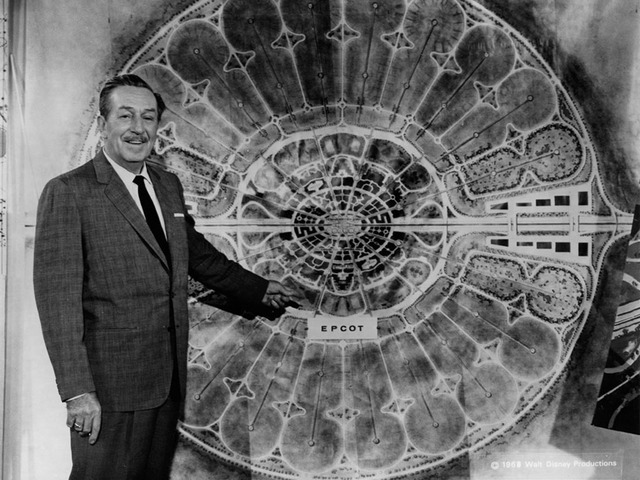
Walt Disney with Master Plan of EPCOT City
EPCOT was the brainchild of Walt Disney, conceived in 1955.
EPCOT was designed to be a community of tomorrow which would never be complete but would also keep introducing, testing and demonstrating new materials and systems.
The first master plan was developed in 1966 by Walt Disney, the city never came into existence as Walt Disney passed away two months after the planning.
The project was sized at 27,800 acres and would cater to 20,000 inhabitants.
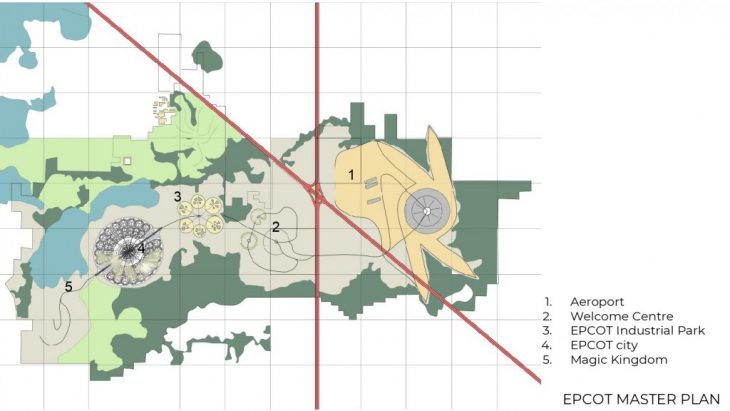
Master Plan, EPCOT
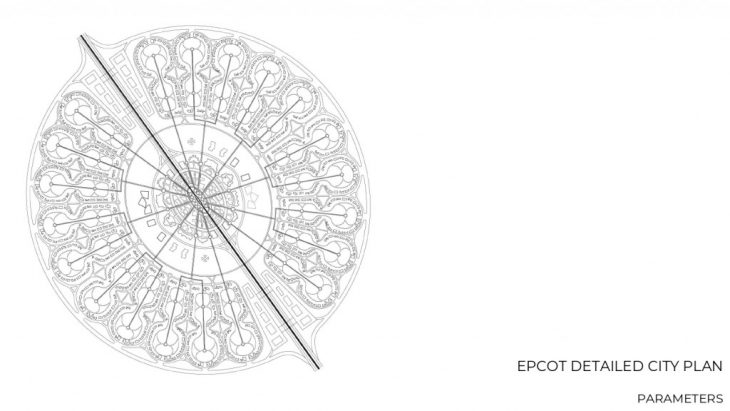
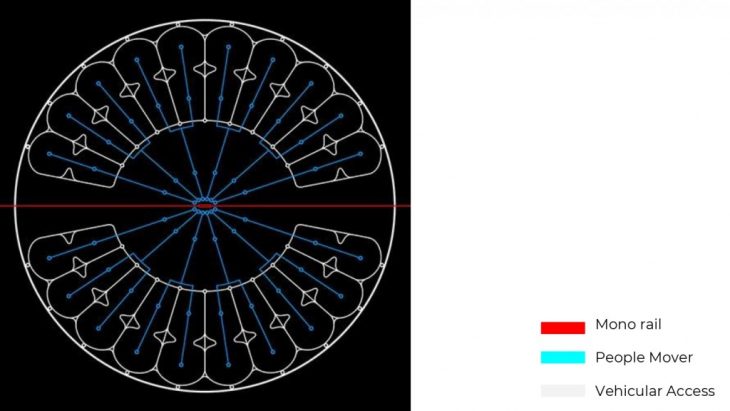
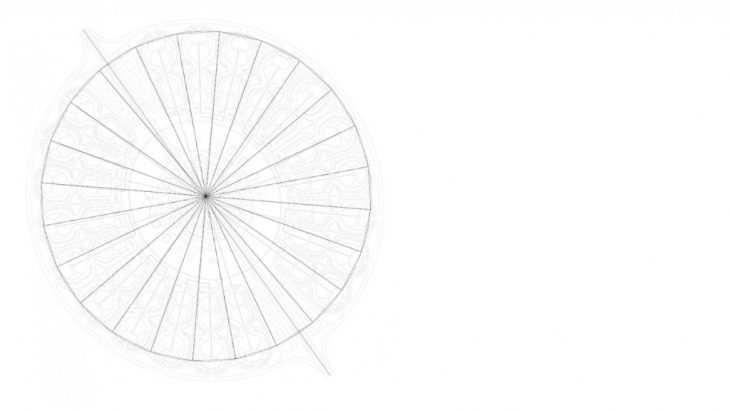
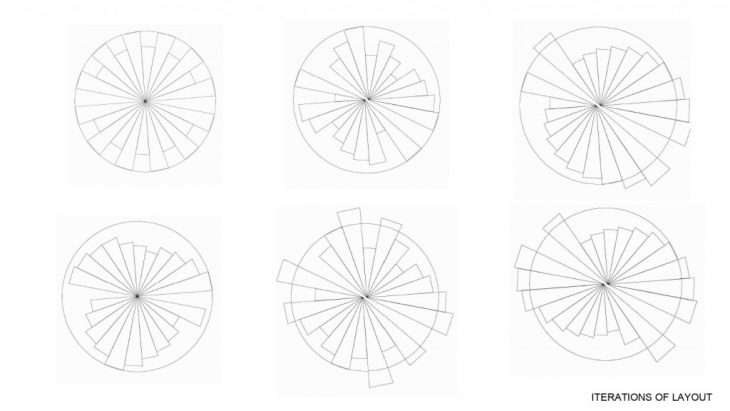
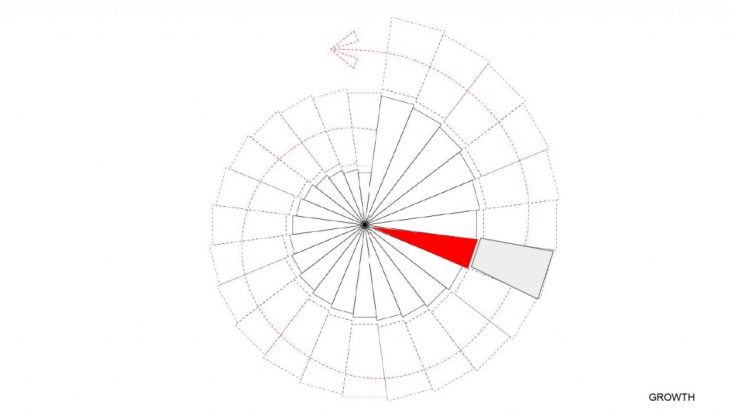
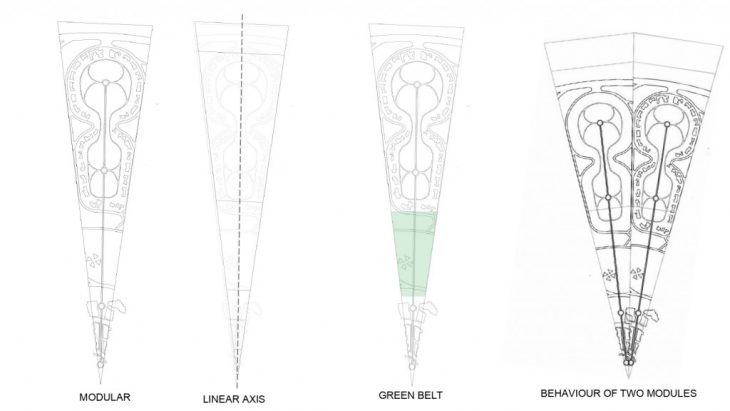
Design Proposal –
The base idea is to visualise how the grid of the city can be overlapped with the structure or the built mass of the city to create a city which reduces its footprint of the city.
Integrating mobility network over, above and between the built mass creates an interesting overlay of the city fabric.
A spiral pattern is decided to show growth and variation in a single slice of the city.
Analysis Cerda block gives rise to the idea of creating green spaces in the city.
Lateral Connection in the city via Vehicular Access following the geometry.
Every overlay is divided into 3 –
- Pedestrian access, parks
- Built mass
- Electric mobility access
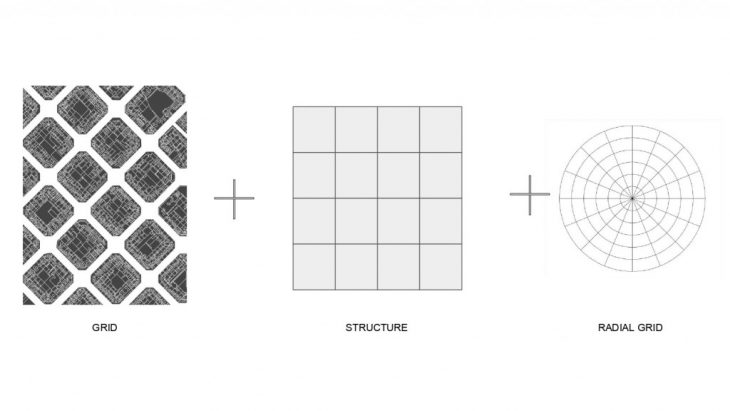
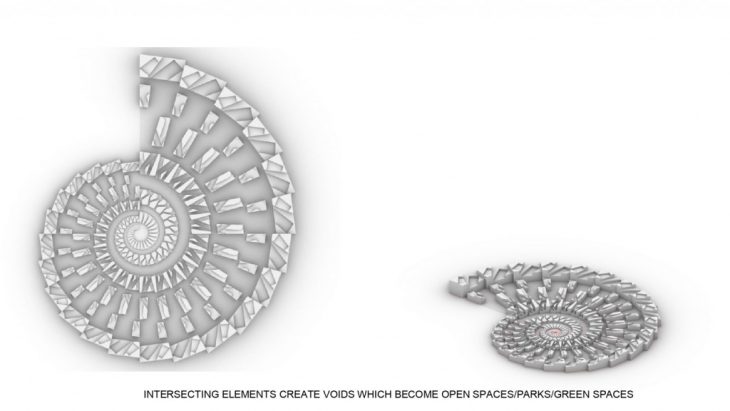
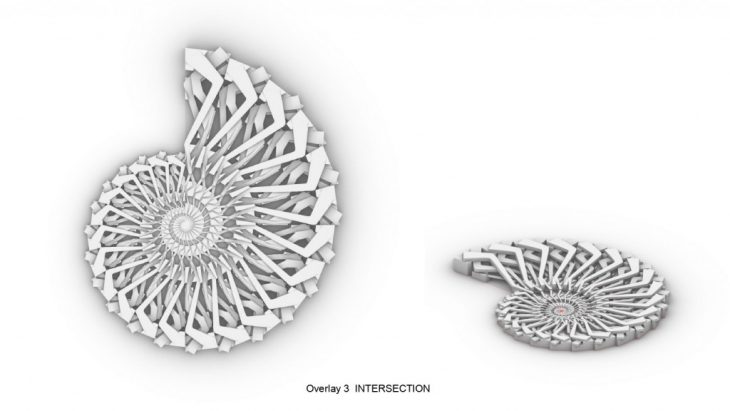
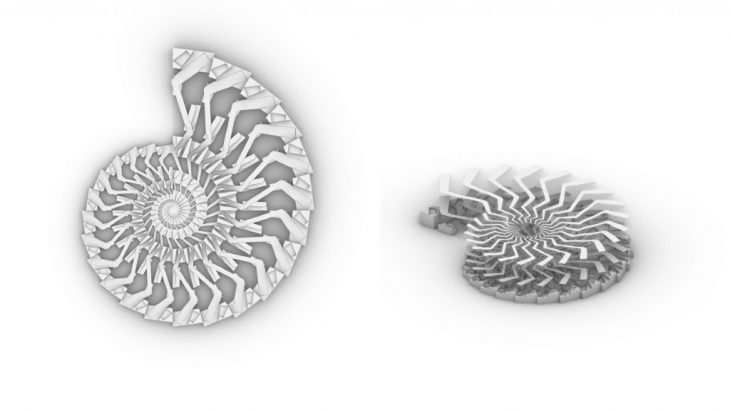
Overlay 1 -Pedestrian | Electric Access

Overlay 2 – Pedestrian | Built Mass | Electric Access | Built mass

Overlay 3 – Built mass | Pedestrian Access | Built mass | Electric Access | Built mass
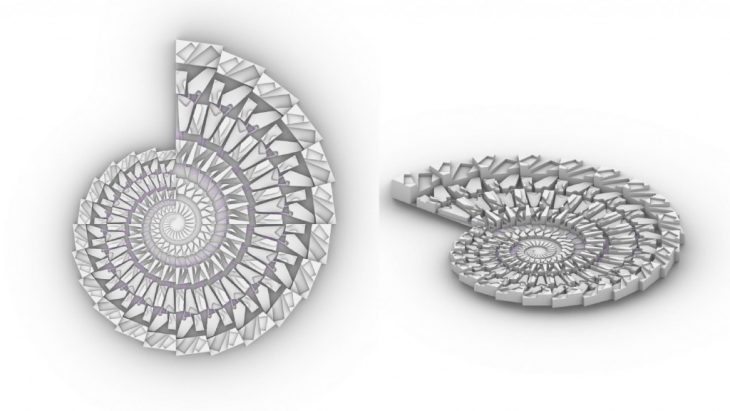
Creating of Parking Spaces – Level 1 Vehicular Access
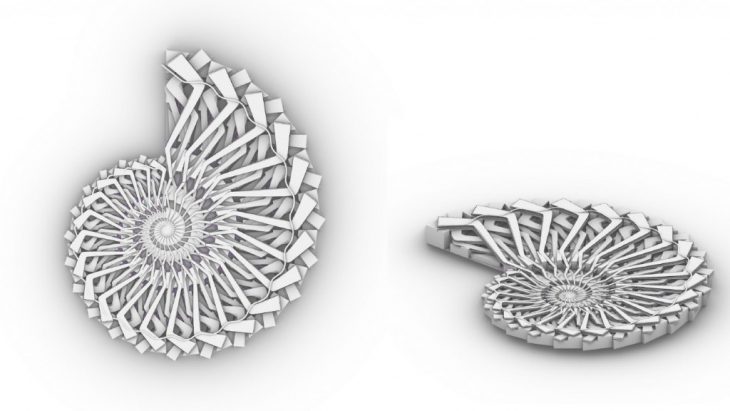
Lateral Connection – Level 2 Vehicular Access
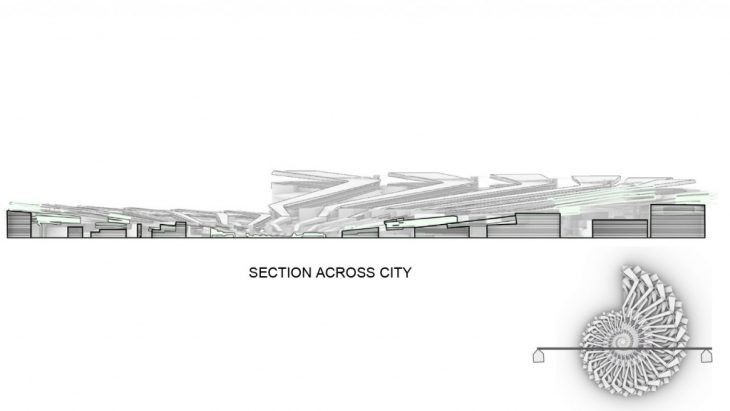
Section Across City
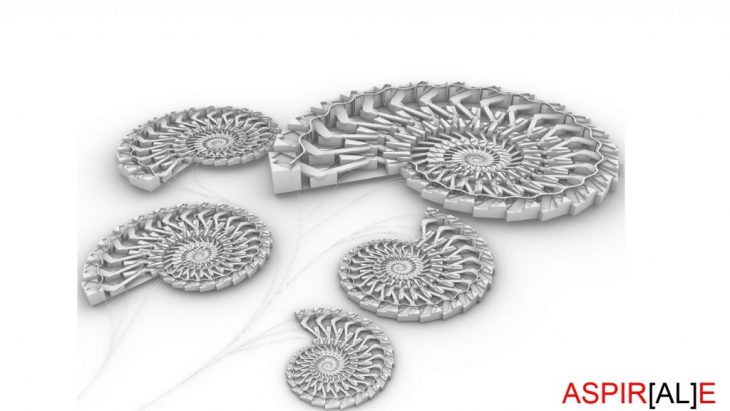
A layout of Multiple Cities
ASPIR[AL]E – View of Highway
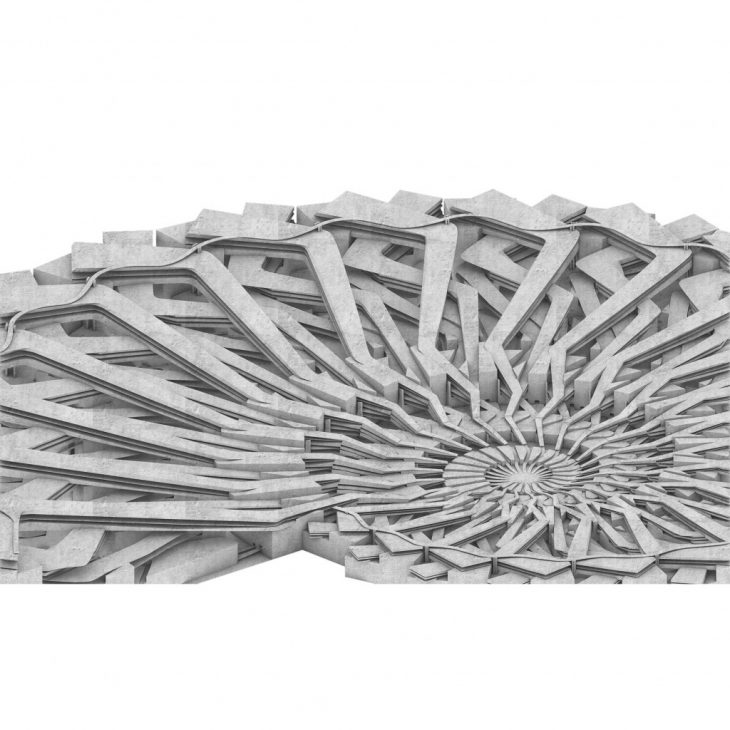
ASPIR[AL]E – View 1
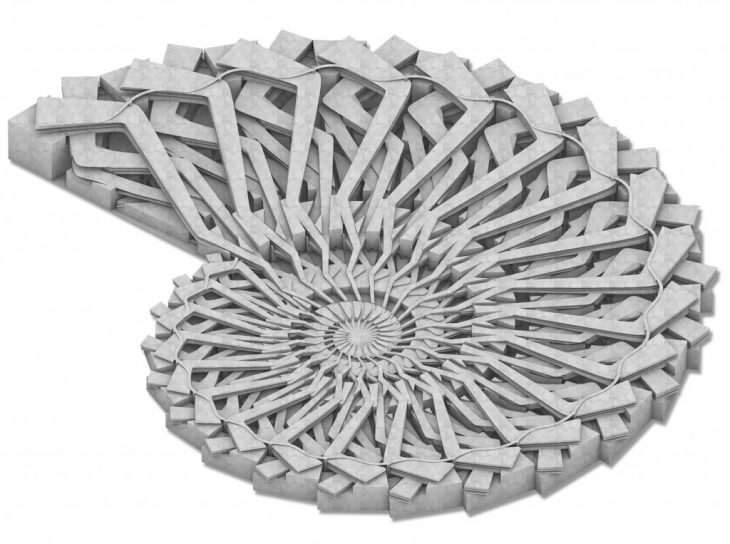
ASPIR[AL]E – View 2
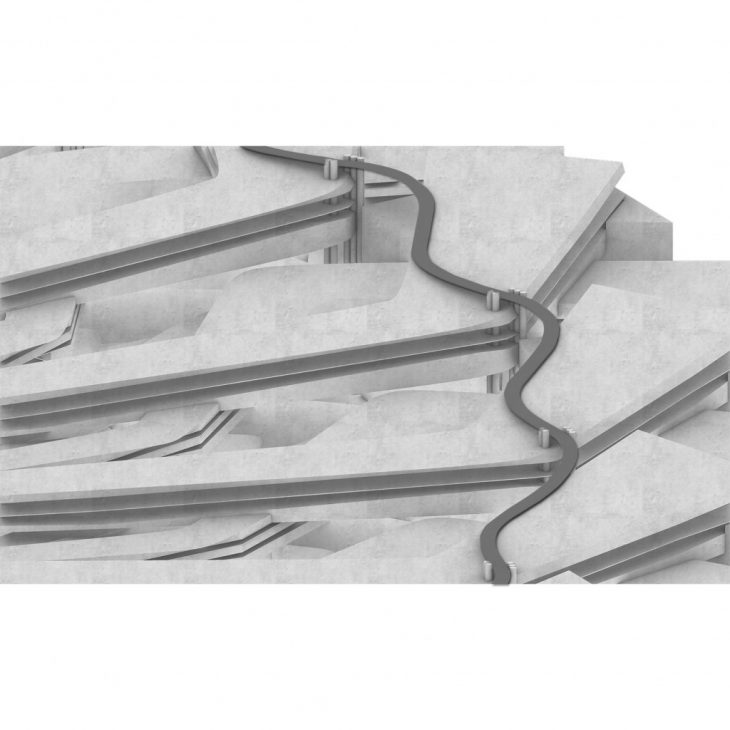
ASPIR[AL]E – Lateral Mobility | Highway
ASPIR[AL]E is a project of IAAC, Institute of Advanced Architecture of Catalonia, developed as part of the X Urban Design course at the Master in Advanced Architecture program in 2018/19.
Student: Pratik Girish Borse
Tutor: Willy Muller and Jordi Vivaldi
Support: Jose Carlos Cervantes
